Stocking cultivable fish of multiple species with varying eating patterns in the same pond is known as composite fish culture, polyculture, or mixed fish farming. In other terms, raising many species of fish together is known as composite fish culture, polyculture, or just fish culture. Catla, for instance, eats aquatic insects; Rohu, in the middle of the water; Mrigal, and regular Carp, on the bottom; and Grass carp, on the vegetation floating above it.
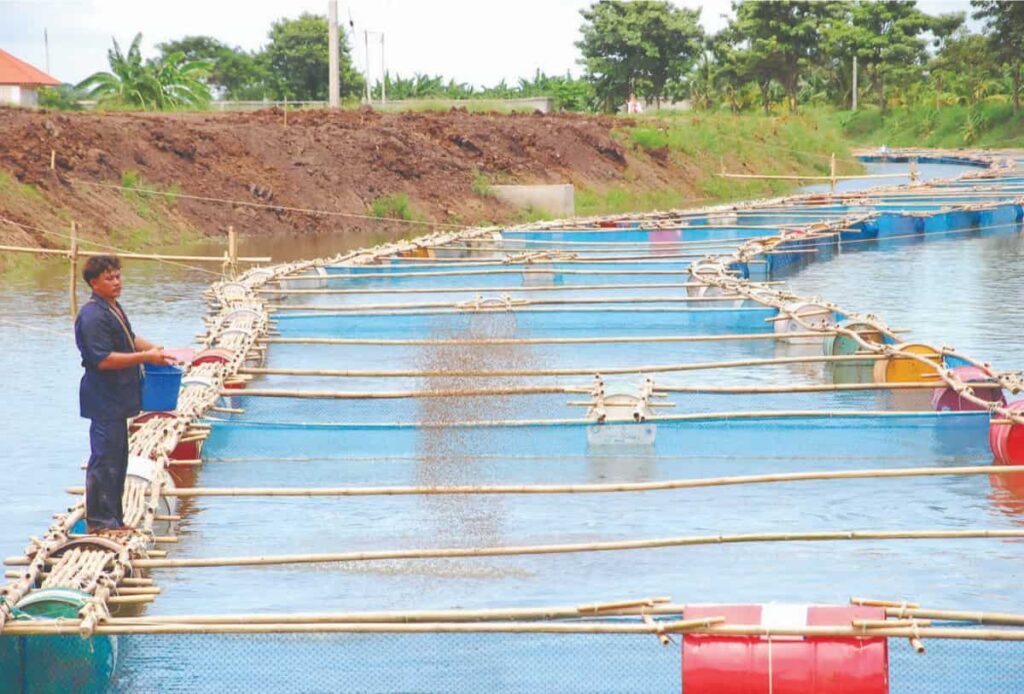
Diverse organisms can thrive near one another because they can share the pond’s food source without interfering with one another. The primary goal of aquaculture is to maximize fish yield in ponds and other water bodies. Managing the water and the soil and caring for the fish themselves are part of the fish farming process. Fish have a low water consumption rate and a high reproductive rate, both of which strongly favor fish farming. Let’s check out how this farmer earned 5 lakhs from fish and prawn mixed farming below.
Protein, vitamins, and other components crucial to human health and development can all be found in fish. Due to future space and food limitations, the amount of animal protein available is expected to decline as the population continues to grow. More thought must be given to the means of increasing the production of animal protein. The protein in the fish is excellent. The greatest promise lies in pond farming, where more fish can be produced under regulated circumstances.
The ecology of the fish pond is rather sophisticated. Planktonic and planarian creatures, as well as zooplankton, populate the water’s surface. Both living and non-living organic matter have descended to the bottom of the column area, which is rich in dead organic matter. Composite fish culture or polyculture is a new idea in fish farming developed, keeping limitations in mind.
Polyculture, or mixed farming, is another name for this method. The major goal of this intensive fish culture is to maximize fish output by selecting and cultivating competitive fish species with varying eating habits that can take advantage of all the different forms of food.
In case you missed it: Making 60 Lakh Per Year from Prawn/Shrimp Farming – A Success Story of an Aqua Farmer
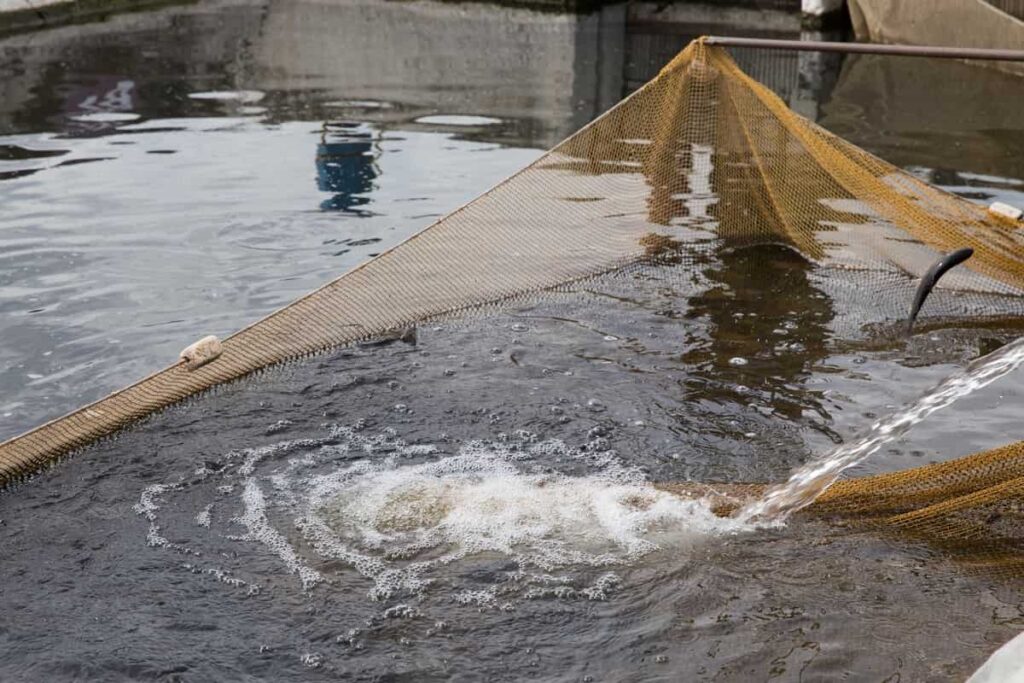
How this farmer earned 5 lakhs from fish and prawn mixed farming
How is mixed/composite farming different from monoculture?
In a monoculture, just one fish species is raised in a pond. Because they all have the same nutritional needs, fish of the same species in the same pond will all concentrate in the same area. More fish will be stocked when just one kind of fish is being farmed. Because of this, competition is fierce for resources like food and spacing. Fighting amongst fish will cause a high rate of death.
Because of a lack of food, the fish will not reach a healthy size, reducing production. Because of these and other limitations, there is a waste of food and resources in monoculture systems. When comparing composite fish culture to monoculture, there is a huge difference. None of these issues arise in composite fish culture.
There are six distinct fish species in the pond, and they all thrive thanks to the abundant food supply, low levels of predators, and lack of stress. In mixed fish farming, deaths are pretty rare. Raising a huge number of fish in a monoculture is challenging, but a polyculture system can produce 20 times as much as a monoculture with proper scientific management.
What are the principles of composite fish culture?
Mixed fish farming is a system that uses science to maximize the yield of a pond. Food fishes that develop quickly, don’t eat each other, and don’t compete for resources are farmed in groups with fish that have similar dietary needs and can use both natural and artificial food sources. Simultaneously, one fish provides a service to the other. Grass carp waste, for instance, can be used to cultivate fish food organisms, which other fish then consume. There is rarely any competition for resources among the fish.
Common carp and mrigal, both bottom feeders, get some of their nutrition from the waste of grass carp. The abundant feculent matter of the grass carp can contaminate the water in a culture pond if the bottom feeders are lacking. When the right quantity of fish for each species is stocked, the available habitats can be used to their full potential. If the pond is fertilized, and supplemental feed is used to keep the stocked fish healthy, the pond’s carrying capacity or ability to produce will improve.
In case you missed it: Organic Shrimp Farming – Prawn Production Practices
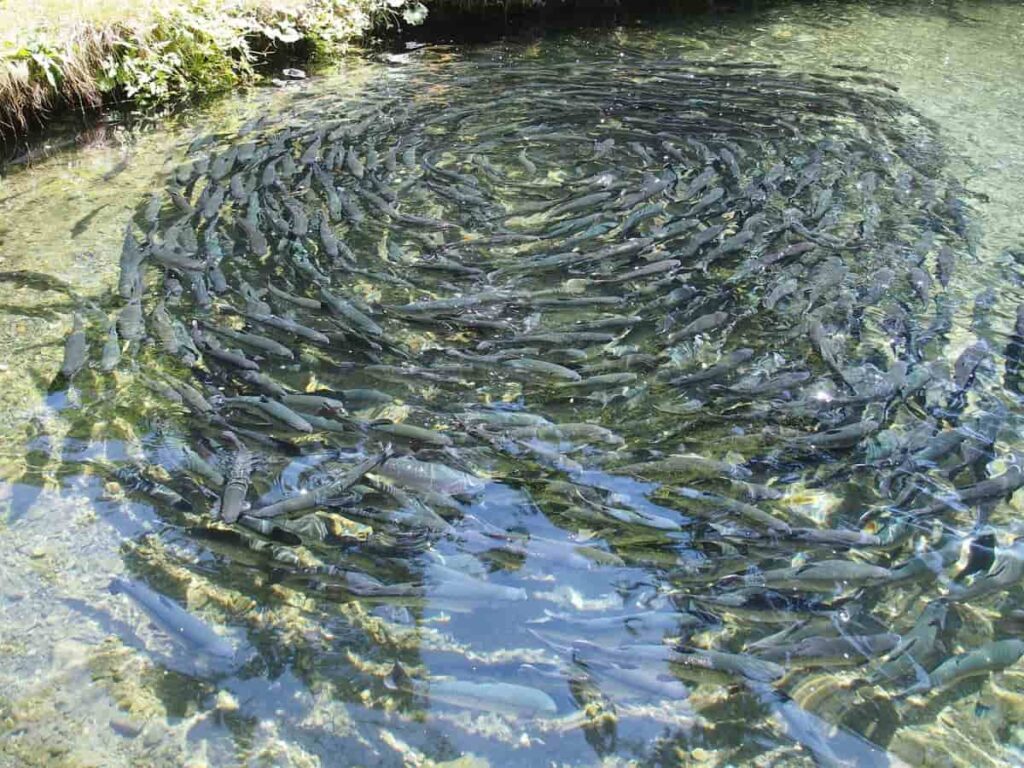
The success story of Mr. Rama Krishna
Ramakrishna is a farmer in the Nellore district who was initially an agriculture farmer. He owned 3 acres of land, which he used to do agriculture. But he wanted to do something different due to heavy rainfalls and other financial issues. Ramakrishna has a keen interest in listening to agriculture news, and one day, he came across mixed fish farming, which caught his eye.
He immediately contacted his friends in the fishing industry and learned about the basic details of mixed fish farming. He was keenly interested in the idea of rearing different fish in the same pond and was fascinated by it. He took his time and learned more in-depth about the mixed fish farming concept and decided to take his first steps in the fishing industry.
He arranged the capital needed with his savings and also with the help of government support from banks. With proper knowledge, he constructed a pond on the 3 acres he owned and started his mixed fish/polyculture farm. How he moved forward and what decisions he took are mentioned below in detail.
The fish and prawn species that Rama Krishna chose
Mr. Ramakrishna has chosen the Roopchand fish species for the culture because they develop fast. Roop Chand fish species can mature and be ready to be harvested within 5-6 months. Fish culture involves much plankton, which must be reduced in ponds. In commercial and conventional fish farming, plankton is reduced by various chemicals, which involves additional costs to the farmer.
To control this, he chose to raise Common carp fish (Bangaaru Teega in Telugu), which consumes and grows on plankton. This culture comes in handy to raise Roopchand, which should not be disturbed by plankton. Now the essential element of mixed fish farming comes in, that is prawns. Prawns mature very fast, mostly within three months. Fish habitats alter elements in ponds, which comes in handy to raise prawns easily, which makes a perfect habitat for both of them.
Mr. Ramakrishna chose Vennamei prawn for the culture as it has high demand in the market. These Vennamei prawns are cultivated in different nets in the middle of the ponds here and there. They don’t directly mix the fish and prawn in the pond. This is because Roopchand fish are a bit aggressive fish. This can have a huge effect on prawns’ health sometimes. Sometimes they can feed on prawns. To eliminate this problem, the prawns are cultivated in separate nets.
Feed details of Mr. Ramakrishna’s mixed farming farm
Feed is one of the essential aspects of any fish culture technique. In this type of culture, the feed is mainly for the prawns. Feed is spread across the ponds in boats. Mr. Ramakrishna uses two kinds of feed: floating feed and the other is sinking feed. Floating feed is the one that floats on the water and can be used as food for both the fish and the prawns. Sinking is feed is mainly given to the prawns.
In case you missed it: How to Start Cage Culture Fish Farming in India: Types, Cost, Profit, Report, and Management
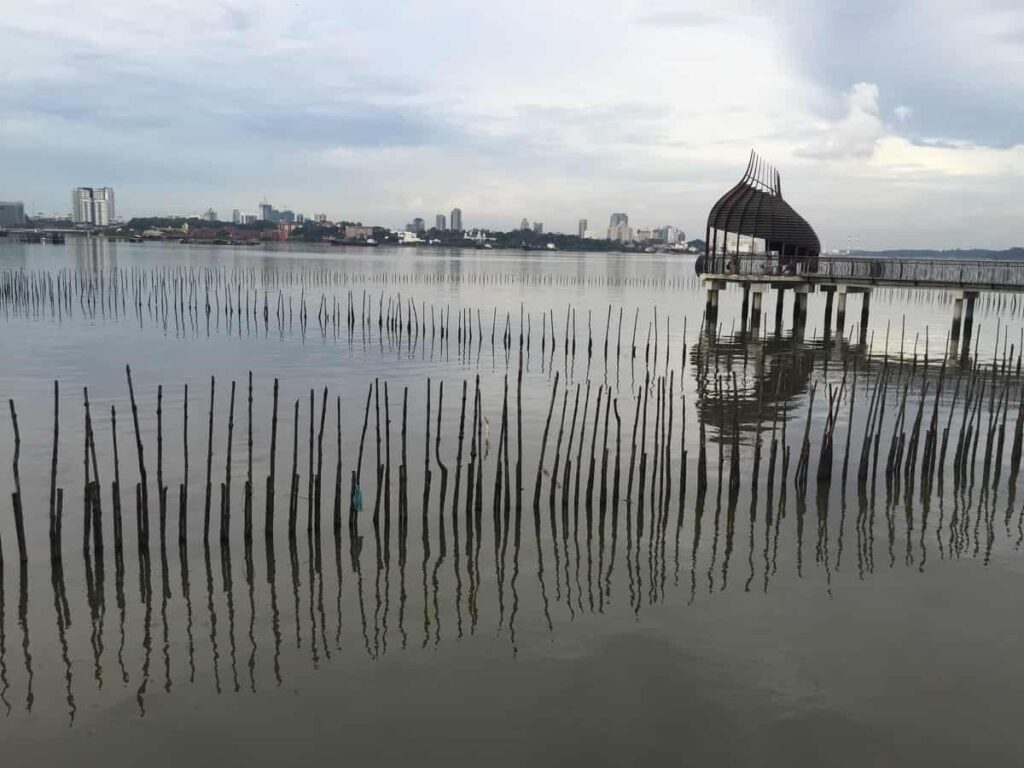
Mr. Ramakrishna says one can also use fermented feed mixture to feed the fish and prawns on one’s fish farm. Fermented feed mixture can be spread to both fish and prawns for consumption. One can make a fermented mixture on their own. Per acre, you must mix 15 kg of rice flour, 15 kg of jaggery, 10kg of rice husk, 10kg mixture of groundnut shell, and 1 kg of yeast should be mixed with water in a drum.
This mixture has to be left aside for three to four days and spread equally to the fish and prawns according to their stocking afterward. This can result in the best results for fish and prawn weight as it is a nutritious diet for both species. This also acts as a natural probiotic for itself. So you can cut the cost of buying chemical probiotics on your fish farm. This mixture can also correct water pH if given in proper proportions, leading to profitable fish production.
Usage of aerators
Mr. Rama Krishna says that successful prawn farming necessitates appropriate technical inputs. The fish species you want to cultivate will determine the water quality requirements. Because prawns need a steady supply of oxygen to live and multiply, the water quality is crucial to every prawn farm. Mechanical aerators are necessary for this task. These aerators will keep the water at a steady temperature and aid in keeping the pH level stable, both of which are essential for the well-being of the prawn, he said.
In addition to deterring potential predators, aerators assist in maintaining a healthy ecosystem by reducing the prevalence of pathogens, parasites, and invasive plant life in the water. Because of the high quality of the water, freshwater prawns thrive there. He also says that if you want to be successful in prawn farming, this is the single most critical aspect of mixed polyculture involving prawn and fish farming.
The pond must have an adequate supply of oxygen, and the only thing that can assist in this effort is mechanical aerators. When the prawns are provided with proper aeration, they will have a healthy life, which is better for fish growth, as it alters the habitat, which will be suitable for fish. This whole mixed farming depends on one aspect, and nothing should go wrong, and if it did, the whole operation could have a negative effect.
In case you missed it: A Guide to Understand RAS Fish Farming: Check How This Helps Beginners
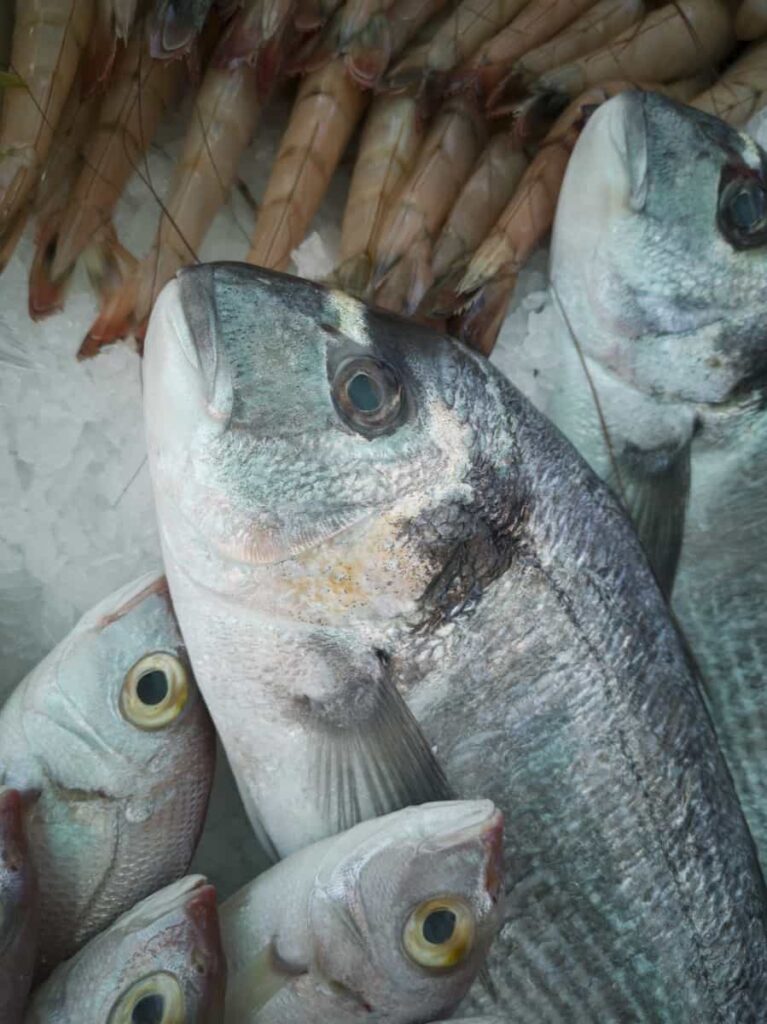
Important things to remember
You have to be very careful while buying fish and prawn seed. You must ensure that the seed you buy is from a reputable seller. You should also test fish and prawn seed health and status. The same goes for buying feed also. If you have time and patience, you can make your own natural fermented feed mixture. But if you opt to buy fish feed, go for reputable sellers. Taking care of these two aspects can help you make huge profits and create a healthy mixed fish farming culture.
Also, Mr. Rama Krishna suggested using two aerators per acre for prawn culture. As prawns need oxygen in water, aerators are a must to keep them healthy. Otherwise, they can suffocate and die. Buy needed medicine and pH alteration chemicals only if needed. Take a proper test and analyze the results of your pond water so that you can know exactly how much fish or prawn medicine is needed. Make regular checks and monitor your fish farm from predators.
Financial analysis of Mr. Ramakrishna’s mixed fish farm
In his 3-acre pond, Mr. Ramakrishna has stocked nearly 40,000 fish and 25,000 prawn seed. He said he invested nearly 1.5 lakh on fish and prawn seeds without jumping into the details. As the pond is his own, he doesn’t pay a lease to anyone, which saves him some money. For the feed he nearly invested nearly 1.2 lakh for both feeds.
You have to note that, on Mr. Ramakrishna’s farm, the fish takes 5-6 months to get ready to be harvested, and the prawn takes three months. So the prawns are harvested before the fish. After the prawns get harvested, the fish need to be fed with feed; considering these costs, he said that it costs nearly 1.2 lakhs for him to buy feed. Two laborers work for him, costing him nearly 1.5 lakh per year.
These laborers work the whole year looking over the land preparation for the next batch after one batch gets harvested. The additional medicinal and miscellaneous costs are nearly rupees 40,000 to 50,000. Aerators are a one-time investment that can cost nearly 1 lakh as he bought six aerators for 3 acres. So the total income would be 5,70,000 rupees. This figure includes a one-time investment, which has to be noted. Excluding one-time investment, the amount can be estimated to be 5,00,000 rupees.
In case you missed it: How to Start Shrimp/Prawn Farming from Scratch: Check How this Guide Helps Beginners
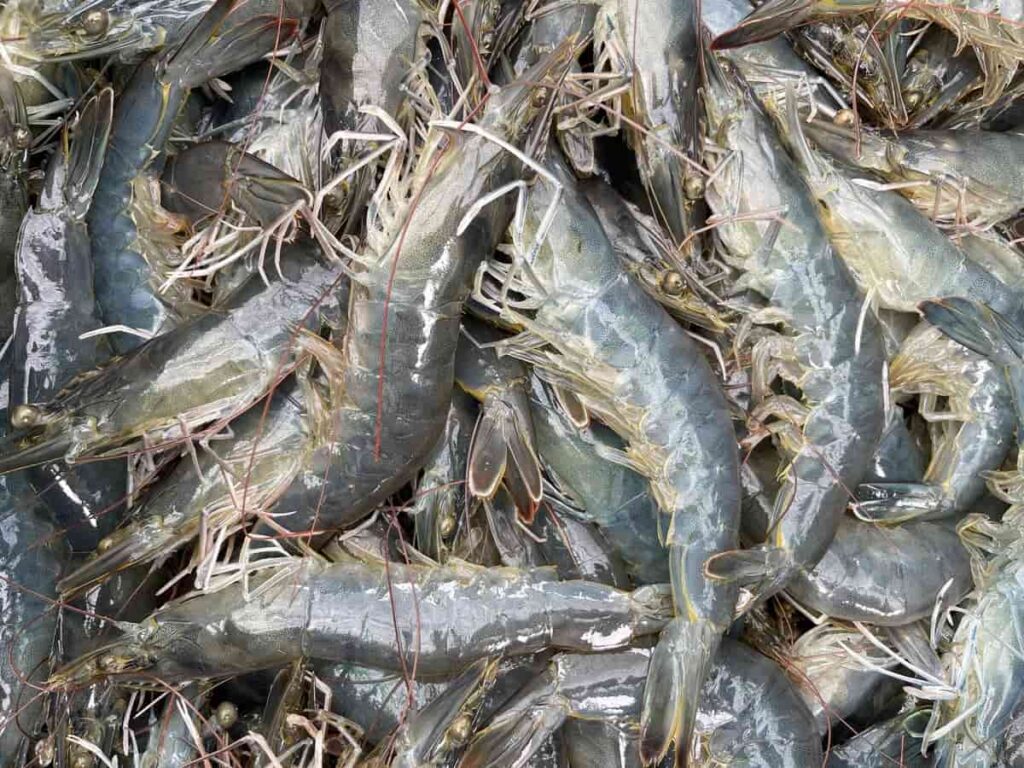
Now coming to the income, Mr. Rama Krishna says that the price for a kilogram for 20 counts is 250 rupees. He says he cultivates nearly 2 tons of prawn and 4 tons of fish. His income for prawns would be 5,00,000 rupees per batch/year. He also said that he sells his fish for 120 rupees per kg, which means his income from fish would be 4,80,000 rupees.
This is huge for what he has invested. That means Mr. Ramakrishna’s income is nearly 9,80,000 rupees per batch. Now discussing the profits, if we eliminate his investment from the income, he will get a profit of 4,30,000 rupees, not excluding one-time investment. When a one-time investment is excluded, the profit can be as much as 5,00,000 rupees. This is a profitable amount for a farmer new to the fishing industry.
Mr. Ramakrishna advises the farmers to get into this business as it can be very profitable, especially in coastal districts of Andhra Pradesh where there is no water scarcity.
- Types of Pesticides Used in Agriculture: A Beginner’s Guide
- Economical Aquaculture: A Guide to Low-Budget Fish Farming
- 15 Common Planting Errors That Can Doom Your Fruit Trees
- How to Make Houseplants Bushy: Effective Tips and Ideas
- Innovative Strategies for Boosting Coconut Pollination and Yield
- Pollination Strategies for Maximum Pumpkin Yield
- The Complete Guide to Chicken Fattening: Strategies for Maximum Growth
- Natural Solutions for Tulip Problems: 100% Effective Remedies for Leaf and Bulb-Related Issues
- Revolutionizing Citrus Preservation: Towards a Healthier, Greener Future
- Natural Solutions for Peony Leaf and Flower Problems: 100% Effective Remedies
- Maximizing Profits with Avocado Contract Farming in India: A Comprehensive Guide
- Natural Solutions for Hydrangea Problems: 100% Effective Remedies for Leaf and Flowers
- The Ultimate Guide to Choosing the Perfect Foliage Friend: Bringing Life Indoors
- From Sunlight to Sustainability: 15 Ways to Use Solar Technology in Agriculture
- The Ultimate Guide to Dong Tao Chicken: Exploring from History to Raising
- The Eco-Friendly Makeover: How to Convert Your Unused Swimming Pool into a Fish Pond
- Mastering the Art of Delaware Chicken Farming: Essentials for Healthy Backyard Flocks
- 20 Best Homemade Fertilizers for Money Plant: DIY Recipes and Application Methods
- How to Craft a Comprehensive Free-Range Chicken Farming Business Plan
- Brighten Your Flock: Raising Easter Egger Chickens for Beauty and Bounty
- How to Optimize Your Poultry Egg Farm Business Plan with These Strategies
- Subsidy for Spirulina Cultivation: How Indian Government Schemes Encouraging Spirulina Farmers
- Ultimate Guide to Raising Dominique Chickens: Breeding, Feeding, Egg-Production, and Care
- Mastering the Art of Raising Jersey Giant Chickens: Care, Feeding, and More
- Ultimate Guide to Raising Legbar Chickens: Breeding, Farming Practices, Diet, Egg-Production
- How to Raise Welsummer Chickens: A Comprehensive Guide for Beginners
- How to Protect Indoor Plants in Winter: A Comprehensive Guide
- Ultimate Guide to Grow Bag Gardening: Tips, Tricks, and Planting Ideas for Urban Gardeners
- Guide to Lotus Cultivation: How to Propagate, Plant, Grow, Care, Cost, and Profit
- Agriculture Drone Subsidy Scheme: Government Kisan Subsidy, License, and How to Apply Online
- Ultimate Guide to Raising Araucana Chickens: Breed Profile, Farming Economics, Diet, and Care
- Bringing Hydroponics to Classroom: Importance, Benefits of Learning for School Students
- Ultimate Guide to Raising Polish Chickens: Breed Profile, Farming Economics, Diet, and Care
- Ultimate Guide to Raising Australorp Chickens: Profile, Farming Economics, Egg Production, Diet, and Care
- Silkie Chicken Farming: Raising Practices, Varieties, Egg Production, Diet, and Care
- Sussex Chicken Farming: Raising Practices, Varieties, Egg Production, Diet and Care